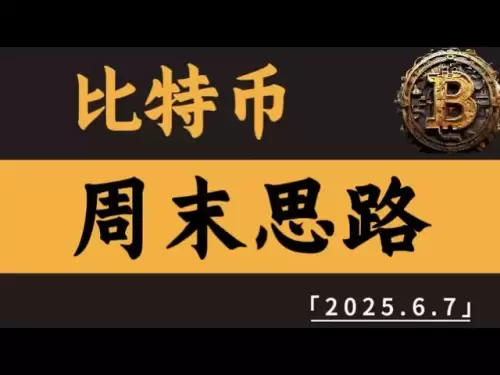-
 Bitcoin
Bitcoin $105,543.4039
0.48% -
 Ethereum
Ethereum $2,522.4433
0.41% -
 Tether USDt
Tether USDt $1.0005
-0.02% -
 XRP
XRP $2.1828
-0.08% -
 BNB
BNB $649.8342
-0.04% -
 Solana
Solana $151.2193
-0.19% -
 USDC
USDC $1.0000
0.00% -
 Dogecoin
Dogecoin $0.1873
2.20% -
 TRON
TRON $0.2793
-0.08% -
 Cardano
Cardano $0.6683
-0.17% -
 Hyperliquid
Hyperliquid $34.7636
-0.73% -
 Sui
Sui $3.2766
2.74% -
 Chainlink
Chainlink $13.9896
2.66% -
 Avalanche
Avalanche $20.9618
5.56% -
 UNUS SED LEO
UNUS SED LEO $9.1658
3.04% -
 Stellar
Stellar $0.2670
0.38% -
 Bitcoin Cash
Bitcoin Cash $410.5801
4.10% -
 Toncoin
Toncoin $3.1794
-0.56% -
 Shiba Inu
Shiba Inu $0.0...01278
0.06% -
 Hedera
Hedera $0.1699
0.77% -
 Litecoin
Litecoin $88.8375
2.40% -
 Polkadot
Polkadot $4.0539
1.75% -
 Monero
Monero $327.0389
-0.94% -
 Ethena USDe
Ethena USDe $1.0013
0.00% -
 Bitget Token
Bitget Token $4.6715
0.84% -
 Dai
Dai $0.9999
0.00% -
 Pepe
Pepe $0.0...01145
0.15% -
 Pi
Pi $0.6230
0.51% -
 Uniswap
Uniswap $6.3269
3.26% -
 Aave
Aave $257.8981
1.84%
How to combine the time period and price range to calculate the Fibonacci resonance point?
The Fibonacci resonance point combines price and time to pinpoint accurate support and resistance levels, enhancing crypto trading strategies.
Jun 07, 2025 at 10:56 am
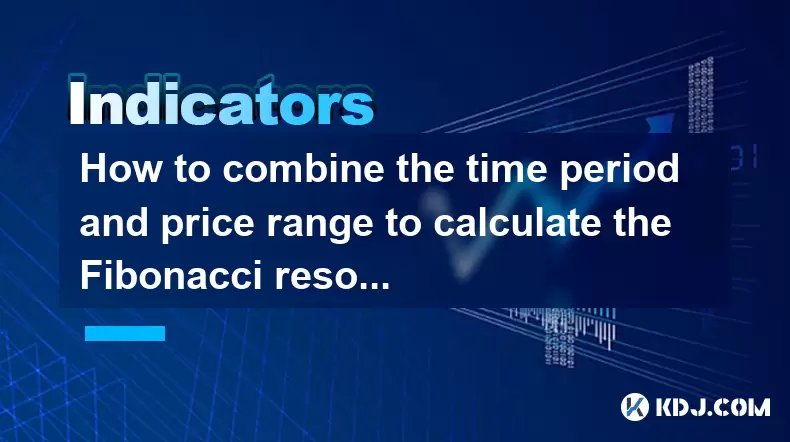
In the world of cryptocurrency, technical analysis plays a crucial role in helping traders make informed decisions. One popular tool used by many traders is the Fibonacci retracement, which helps identify potential support and resistance levels. However, a more advanced technique, known as the Fibonacci resonance point, combines the time period and price range to pinpoint even more accurate levels. This article will guide you through the process of calculating the Fibonacci resonance point, ensuring you have a comprehensive understanding of this powerful tool.
Understanding Fibonacci Retracement
Before diving into the Fibonacci resonance point, it's essential to have a solid grasp of the Fibonacci retracement. This tool is based on the Fibonacci sequence, a series of numbers where each number is the sum of the two preceding ones (0, 1, 1, 2, 3, 5, 8, 13, 21, and so on). In trading, the key Fibonacci ratios used are 23.6%, 38.2%, 50%, 61.8%, and 78.6%. These ratios help traders identify potential reversal points in a market trend.
To use Fibonacci retracement, you need to identify the highest and lowest points of a trend. Once these points are established, you can draw the Fibonacci levels on your chart, which will help you anticipate where the price might find support or resistance.
The Concept of Fibonacci Resonance
Fibonacci resonance takes the concept of Fibonacci retracement a step further by incorporating the time element. While traditional Fibonacci retracement focuses solely on price, resonance considers both price and time, making it a more comprehensive tool for traders.
The idea behind Fibonacci resonance is that certain time periods and price levels can resonate with each other, creating more significant support and resistance levels. By combining these two factors, traders can identify points where the market is more likely to react, increasing the accuracy of their predictions.
Calculating the Fibonacci Resonance Point
To calculate the Fibonacci resonance point, you need to follow a systematic approach that involves both price and time analysis. Here's how you can do it:
Identifying the Price Range
- Select the trend: Start by identifying a clear trend in the cryptocurrency market. This could be an uptrend or a downtrend.
- Determine the high and low points: Once the trend is identified, pinpoint the highest and lowest points within that trend. These points will serve as the basis for your Fibonacci retracement levels.
- Draw the Fibonacci levels: Using a charting tool, draw the Fibonacci retracement levels from the high to the low (for a downtrend) or from the low to the high (for an uptrend). The key levels to focus on are 23.6%, 38.2%, 50%, 61.8%, and 78.6%.
Analyzing the Time Period
- Identify the time frame: Choose a time frame that aligns with your trading strategy. This could be a daily, weekly, or monthly chart, depending on your preference.
- Calculate the time intervals: Measure the time between the high and low points identified in the price range. You can use a Fibonacci time tool to draw lines that correspond to the Fibonacci ratios (23.6%, 38.2%, 50%, 61.8%, and 78.6%) of the total time period.
Combining Price and Time
- Overlay the Fibonacci levels: Once you have the price and time Fibonacci levels, overlay them on your chart. The points where the price and time levels intersect are your Fibonacci resonance points.
- Identify the strongest resonance points: Look for areas where multiple Fibonacci levels converge. These areas are likely to be the most significant support and resistance levels, as they are reinforced by both price and time.
Applying Fibonacci Resonance in Trading
Now that you understand how to calculate the Fibonacci resonance point, let's explore how you can apply this tool in your cryptocurrency trading strategy.
Entry and Exit Points
- Entry points: Use the Fibonacci resonance points to identify potential entry points. If the price approaches a resonance point and shows signs of a reversal, it could be an opportune time to enter a trade.
- Exit points: Similarly, use the resonance points to determine when to exit a trade. If the price reaches a resonance point and shows signs of a potential reversal, it might be wise to take profits or cut losses.
Risk Management
- Setting stop-losses: Place your stop-loss orders just beyond the Fibonacci resonance points to minimize potential losses. This way, if the price moves against your position, you can exit the trade before incurring significant losses.
- Adjusting targets: Use the resonance points to set realistic profit targets. If the price reaches a resonance point and continues in your favor, you can adjust your targets to lock in profits.
Confirmation with Other Indicators
- Use additional indicators: While the Fibonacci resonance point is a powerful tool, it's always beneficial to use it in conjunction with other technical indicators. For example, you might look for confirmation from moving averages, RSI, or MACD to increase the reliability of your trading signals.
Practical Example of Fibonacci Resonance in Cryptocurrency Trading
To illustrate how the Fibonacci resonance point works in practice, let's consider a hypothetical scenario involving Bitcoin (BTC).
Scenario Setup
- Trend identification: Suppose we identify a downtrend in Bitcoin's price over the past six months.
- Price range: The highest point of the trend was $60,000, and the lowest point was $30,000.
- Time frame: We choose a weekly chart for our analysis.
Calculating Fibonacci Levels
- Price levels: Using the Fibonacci retracement tool, we draw levels from $60,000 to $30,000. The key levels are:
- 23.6% = $50,400
- 38.2% = $45,600
- 50% = $45,000
- 61.8% = $40,200
- 78.6% = $35,400
- Time intervals: The total time period between the high and low points is 26 weeks. Using the Fibonacci time tool, we calculate the following intervals:
- 23.6% = 6 weeks
- 38.2% = 10 weeks
- 50% = 13 weeks
- 61.8% = 16 weeks
- 78.6% = 20 weeks
Identifying Resonance Points
- Overlaying levels: We overlay the price and time Fibonacci levels on the chart. The points where the price and time levels intersect are our Fibonacci resonance points.
- Strongest resonance: We find that the 38.2% price level ($45,600) and the 50% time interval (13 weeks) intersect at a specific point on the chart. This intersection is a strong Fibonacci resonance point.
Trading Decision
- Entry and exit: If the price approaches the $45,600 level around 13 weeks after the low point and shows signs of a potential reversal, we might consider entering a long position. We would set our stop-loss just below the resonance point and adjust our profit targets based on other Fibonacci levels.
- Confirmation: We would also look for confirmation from other indicators, such as a bullish divergence on the RSI or a bullish crossover on the MACD, to increase the confidence in our trading decision.
Frequently Asked Questions
Q: Can the Fibonacci resonance point be used for all cryptocurrencies?
A: Yes, the Fibonacci resonance point can be applied to any cryptocurrency. However, the effectiveness may vary depending on the liquidity and volatility of the specific cryptocurrency you are trading.
Q: How often should I recalculate the Fibonacci resonance points?
A: It's advisable to recalculate the Fibonacci resonance points whenever there is a significant change in the market trend or when new high and low points are established. This ensures that your analysis remains relevant and accurate.
Q: Is the Fibonacci resonance point more effective than traditional Fibonacci retracement?
A: The Fibonacci resonance point can be more effective than traditional Fibonacci retracement because it incorporates both price and time, providing a more comprehensive view of potential support and resistance levels. However, it's essential to use it in conjunction with other technical analysis tools for the best results.
Q: Can the Fibonacci resonance point be used for long-term trading strategies?
A: Yes, the Fibonacci resonance point can be used for long-term trading strategies by adjusting the time frame and analyzing longer-term trends. This allows traders to identify significant support and resistance levels over extended periods.
Disclaimer:info@kdj.com
The information provided is not trading advice. kdj.com does not assume any responsibility for any investments made based on the information provided in this article. Cryptocurrencies are highly volatile and it is highly recommended that you invest with caution after thorough research!
If you believe that the content used on this website infringes your copyright, please contact us immediately (info@kdj.com) and we will delete it promptly.
- Pi Network Momentum Builds Ahed of Consensus 2025
- 2025-06-07 23:20:12
- 5 Hidden Crypto Gems That Could Explode in 2025
- 2025-06-07 23:20:12
- HYPE Price Analysis: After a Sluggish First Quarter Marked by Consistent Downturns
- 2025-06-07 23:15:12
- Robert Kiyosaki Reiterates Strong Preference for Bitcoin Over Gold and Silver
- 2025-06-07 23:15:12
- Walrus Protocol (WAL) Promises Low-Cost Blockchain Storage
- 2025-06-07 23:10:14
- Changpeng Zhao (CZ) Proposes to Reduce Binance Smart Chain (BSC) Gas Fees by 3x or 10x
- 2025-06-07 23:10:14
Related knowledge
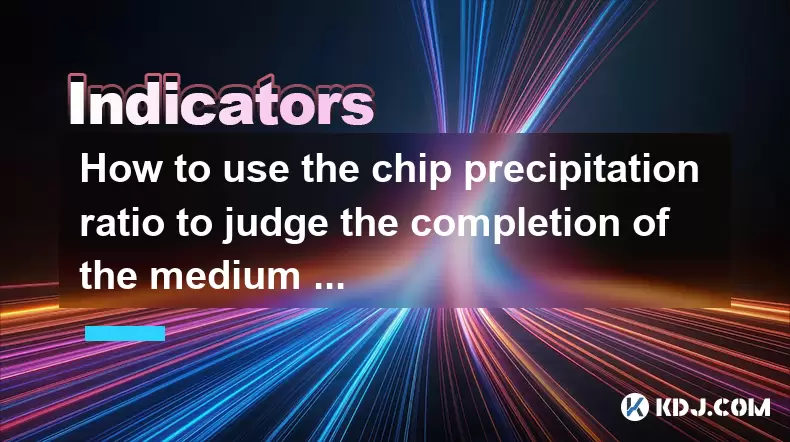
How to use the chip precipitation ratio to judge the completion of the medium and long-term bottom construction?
Jun 04,2025 at 03:36am
The chip precipitation ratio is a crucial metric used by investors to assess the accumulation of chips (or shares) at different price levels over time. This ratio helps in understanding the distribution of chips and can be a powerful tool for determining the completion of medium and long-term bottom construction in the cryptocurrency market. By analyzin...
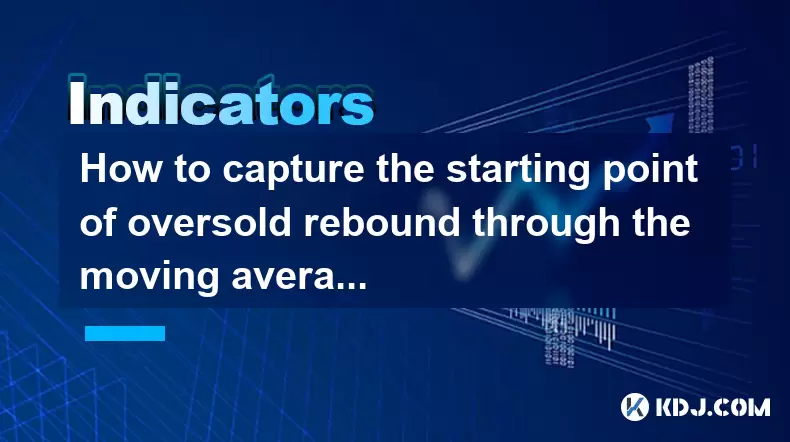
How to capture the starting point of oversold rebound through the moving average gravity reversal strategy?
Jun 04,2025 at 01:01pm
The moving average gravity reversal strategy is a sophisticated approach used by traders to identify potential entry points for buying cryptocurrencies when they are considered oversold. This strategy leverages the concept of moving averages to pinpoint moments when a cryptocurrency might be poised for a rebound. In this article, we will delve into the ...
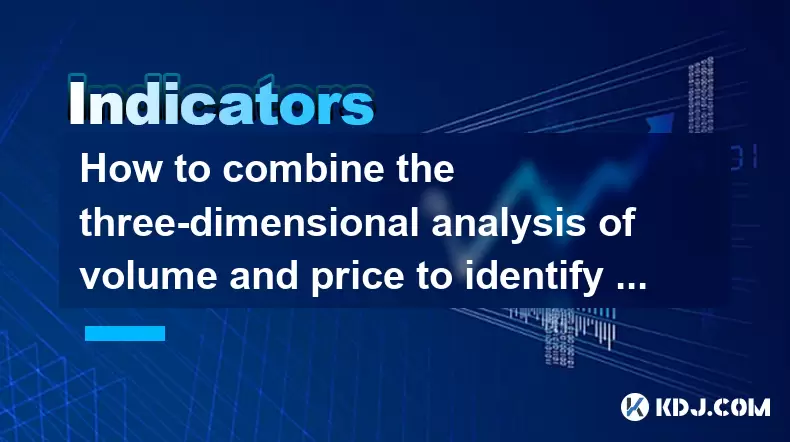
How to combine the three-dimensional analysis of volume and price to identify the golden buying point of breakthrough and retracement?
Jun 03,2025 at 11:42pm
In the dynamic world of cryptocurrencies, identifying the optimal buying points is crucial for maximizing profits and minimizing risks. One effective method to achieve this is by combining three-dimensional analysis of volume and price to pinpoint the golden buying points during breakouts and retracements. This article will delve into how to use this ap...
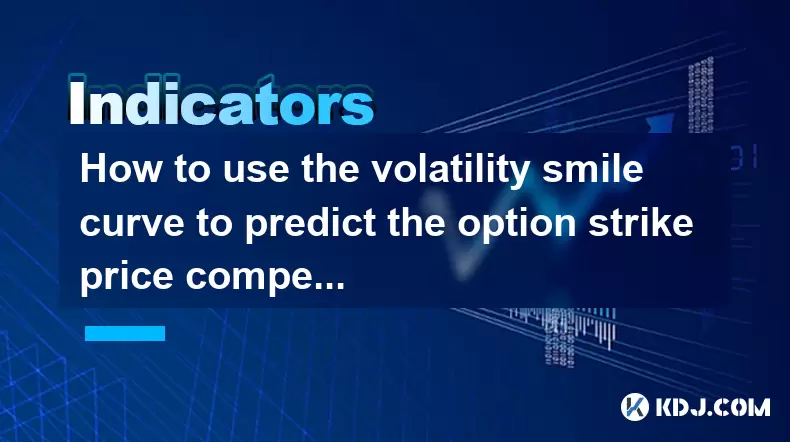
How to use the volatility smile curve to predict the option strike price competition area?
Jun 06,2025 at 01:01pm
The volatility smile curve is a graphical representation that shows the implied volatility of options across different strike prices for a given expiration date. It is called a 'smile' because the curve often takes the shape of a smile, with higher implied volatilities for options that are deep in-the-money or deep out-of-the-money, and lower implied vo...
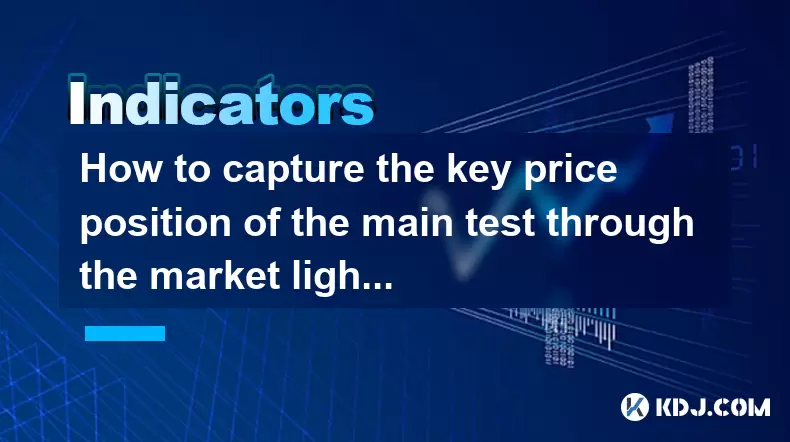
How to capture the key price position of the main test through the market lightning chart?
Jun 02,2025 at 06:07pm
Introduction to Market Lightning ChartThe market lightning chart is a powerful tool used by cryptocurrency traders to visualize price movements and identify key price positions. This chart type provides a detailed view of market activity, allowing traders to spot trends, reversals, and other significant price levels quickly. By understanding how to use ...
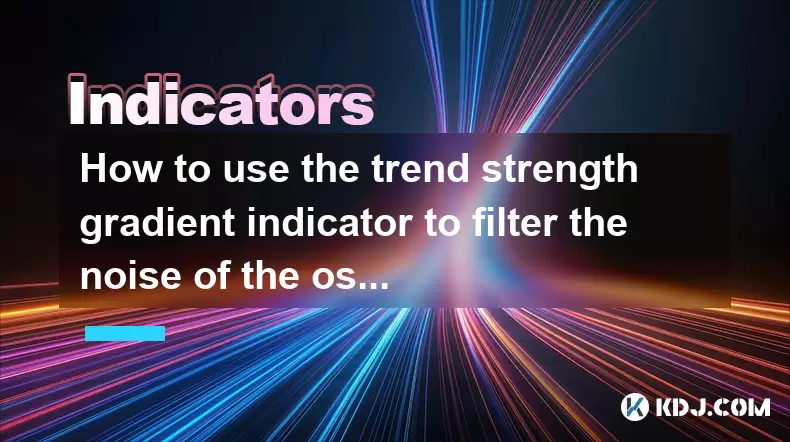
How to use the trend strength gradient indicator to filter the noise of the oscillating market?
Jun 06,2025 at 06:15pm
The trend strength gradient indicator is a powerful tool used by cryptocurrency traders to analyze market trends and filter out the noise that often accompanies oscillating markets. This indicator helps traders identify the strength of a trend, enabling them to make more informed decisions. In this article, we will explore how to effectively use the tre...

How to use the chip precipitation ratio to judge the completion of the medium and long-term bottom construction?
Jun 04,2025 at 03:36am
The chip precipitation ratio is a crucial metric used by investors to assess the accumulation of chips (or shares) at different price levels over time. This ratio helps in understanding the distribution of chips and can be a powerful tool for determining the completion of medium and long-term bottom construction in the cryptocurrency market. By analyzin...

How to capture the starting point of oversold rebound through the moving average gravity reversal strategy?
Jun 04,2025 at 01:01pm
The moving average gravity reversal strategy is a sophisticated approach used by traders to identify potential entry points for buying cryptocurrencies when they are considered oversold. This strategy leverages the concept of moving averages to pinpoint moments when a cryptocurrency might be poised for a rebound. In this article, we will delve into the ...

How to combine the three-dimensional analysis of volume and price to identify the golden buying point of breakthrough and retracement?
Jun 03,2025 at 11:42pm
In the dynamic world of cryptocurrencies, identifying the optimal buying points is crucial for maximizing profits and minimizing risks. One effective method to achieve this is by combining three-dimensional analysis of volume and price to pinpoint the golden buying points during breakouts and retracements. This article will delve into how to use this ap...

How to use the volatility smile curve to predict the option strike price competition area?
Jun 06,2025 at 01:01pm
The volatility smile curve is a graphical representation that shows the implied volatility of options across different strike prices for a given expiration date. It is called a 'smile' because the curve often takes the shape of a smile, with higher implied volatilities for options that are deep in-the-money or deep out-of-the-money, and lower implied vo...

How to capture the key price position of the main test through the market lightning chart?
Jun 02,2025 at 06:07pm
Introduction to Market Lightning ChartThe market lightning chart is a powerful tool used by cryptocurrency traders to visualize price movements and identify key price positions. This chart type provides a detailed view of market activity, allowing traders to spot trends, reversals, and other significant price levels quickly. By understanding how to use ...

How to use the trend strength gradient indicator to filter the noise of the oscillating market?
Jun 06,2025 at 06:15pm
The trend strength gradient indicator is a powerful tool used by cryptocurrency traders to analyze market trends and filter out the noise that often accompanies oscillating markets. This indicator helps traders identify the strength of a trend, enabling them to make more informed decisions. In this article, we will explore how to effectively use the tre...
See all articles


























